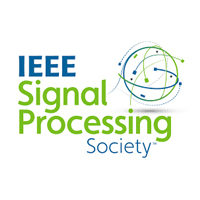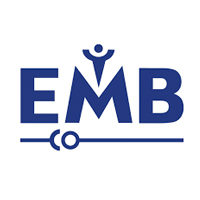Challenges
Challenges will be held during live sessions of 1h30 on Tuesday 13 April between 1.30pm to 6.pm (CET time).
They will be recorded and available on the platform in replay from 14 April and during 6 months for all ISBI’21 attendees.
1:30pm-3pm: A-AFMA
Ultrasound Challenge: Automatic amniotic fluid measurement and analysis from ultrasound video
Abstract
Prenatal ultrasound measurement of amniotic fluid is an important part of monitoring whether a fetus is thriving in-utero, but the process of estimation is time-consuming and requires extensive training. The Automatic Amniotic Fluid Measurement and Analysis (A-AFMA) Challenge invites researchers to develop ultrasound image analysis algorithms that can automate important steps within the estimation process, helping to widen access to this crucial aspect of point-of-care fetal surveillance to areas where pregnancy scans in a hospital are not possible.
Contact
Dr Qingchao Chen, Institute of Biomedical Engineering, University of Oxford, UK, qingchao.chen@eng.ox.ac.uk
Prof. Alison Noble, Institute of Biomedical Engineering, University of Oxford, UK, noble_pm@eng.ox.ac.uk
1:30pm-3pm: SegPC-2021
Segmentation of Multiple Myeloma Plasma Cells in Microscopic Images
Abstract
Contact
Anubha Gupta, SBILab, Department of ECE, IIIT-Delhi, India, anubha@iiitd.ac.in
Shiv Gehlot, SBILab, Department of ECE, IIIT-Delhi, India, shivg@iiitd.ac.in
3pm-4:30pm: MitoEM
Large-scale Mitochondria 3D Instance Segmentation from Electron Microscopy Images
Abstract
Electron microscopy (EM) allows identifying intracellular organelles such as mitochondria, providing insights for clinical and scientific studies. However, existing public mitochondria segmentation datasets only contain few hundreds of instances with simple shapes. Thus, it is unclear if existing methods that achieve human-level accuracy on these small datasets are robust for practical usage.
To address this issue, we introduce the MitoEM challenge to benchmark the saturated 3D mitochondria instance segmentation task on two 30x30x30 um volumes from human and rat cortices respectively. With around 40K instances in our datasets, we find a great diversity of mitochondria structure and distribution. In our preliminary analysis, we found current 3D instance segmentation methods have much room for improvement. Therefore, we hope our MitoEM challenge can help push forward the state-of-the-art 3D instance segmentation methods not only for mitochondria but also for biological structures in general.
Contact
Dr. Donglai Wei, School of Engineering and Applied Science, Harvard University, USA, donglai@seas.harvard.edu
3pm-4:30pm: EndoCV2021
Addressing generalisability in “polyp” detection and segmentation challenge
Abstract
Computer-aided detection, localization, and segmentation methods can help improve colonoscopy procedures. Even though many methods have been built to tackle automatic detection and segmentation of polyps, benchmarking and development of computer vision methods remains an open problem. This is mostly due to the lack of datasets or challenges that incorporate highly heterogeneous dataset appealing participants to test for generalization abilities of the methods. we aim to build a comprehensive, well-curated, and defined dataset from 6 different centres worldwide and provide 5 datasets types that include: i) multi-centre train-test split from four centres ii) polyp size-based split, iii) data centre wise split, iv) modality split and v) two hidden centre test. Participants will be evaluated on all 5 dataset types to address strength and weaknesses of each participants’ method.
Contact
Dr. Sharib Ali (lead) (sharib.ali@eng.ox.ac.uk)
Debesh Jha (debesh@simula.no)
Dr. Noha Ghatwary (nghatwary@lincoln.ac.uk)
4:30pm-6pm: RIADD
Retinal Image Analysis for multi-Disease Detection
Abstract
Contact
Samiksha Pachade, 2017pec601@sggs.ac.in
4:30pm-6pm: CTC
6th ISBI Cell Tracking Challenge
Abstract
The Cell Tracking Challenge is a well-established competition, with the primary aim of objectively benchmarking state-of-the-art cell segmentation and tracking methods over a diverse and annotated repository of multidimensional time-lapse image data of cells and nuclei captured using different light microscopy modalities. In its sixth edition, the primary focus is put on methods that exhibit better generalizability and work across most, if not all, of the 13 already existing datasets, instead of developing methods optimized for one or a few datasets only. To this end, new silver reference segmentation annotations will be released for the training videos of all real datasets with complete gold reference tracking annotations available.
Contact
Carlos Ortiz de Solórzano, codesolorzano@unav.es
Michal Kozubek, kozubek@fi.muni.cz











